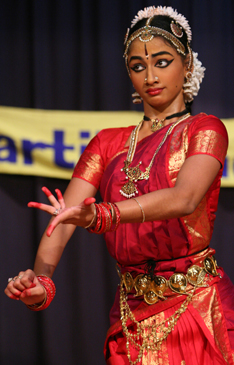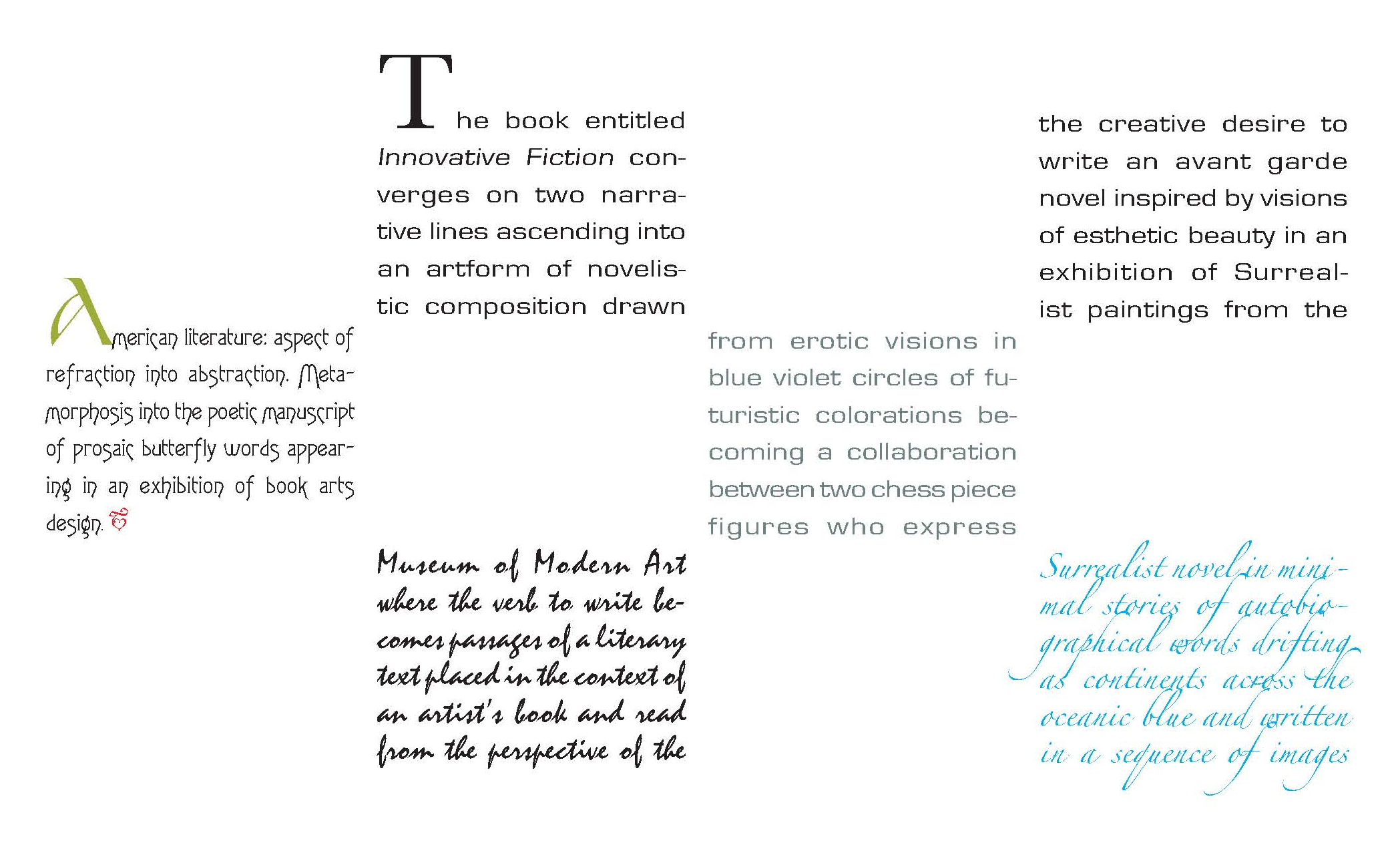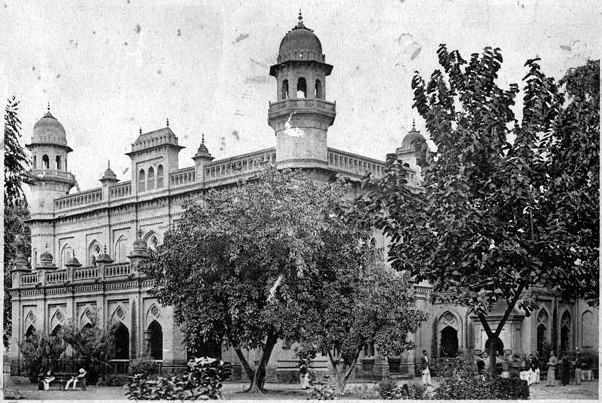|
Tar Saptak
''Tar Saptak'' or ''Taar Saptak'' (; ) is an anthology of Hindi language poems written by seven poets, published in 1943. Compiled by Sachchidananda Vatsyayan (under his penname 'Agyeya'), it contain poems of Gajanan Madhav Muktibodh, Nemi Chandra Jain, Bharat Bhushan Agrawal, Prabhakar Machwe, Girija Kumar Mathur, Ram Vilas Sharma, and Agyeya himself. The publication of ''Tar Saptak'' has been seen as 'historically significant' event, as it influenced later development of modern Hindi poetry. Content Indian music, both vocal and instrumental normally has three registers (''saptak''). The term ''Tar Saptak'' refers to the highest range of the three, and specifically means the 'upper or high octave' or 'high octave'. The volume with this title marked the advent of 'experimentalism' (''prayogvad'') in Hindi poetry. The poets of ''Tar Saptak'' in many ways were different from each other, yet they shared a common impulse to explore new possibilities in the form and content of poet ... [...More Info...] [...Related Items...] OR: [Wikipedia] [Google] [Baidu] |
Hindi
Hindi (Devanāgarī: or , ), or more precisely Modern Standard Hindi (Devanagari: ), is an Indo-Aryan language spoken chiefly in the Hindi Belt region encompassing parts of northern, central, eastern, and western India. Hindi has been described as a standardised and Sanskritised register of the Hindustani language, which itself is based primarily on the Khariboli dialect of Delhi and neighbouring areas of North India. Hindi, written in the Devanagari script, is one of the two official languages of the Government of India, along with English. It is an official language in nine states and three union territories and an additional official language in three other states. Hindi is also one of the 22 scheduled languages of the Republic of India. Hindi is the '' lingua franca'' of the Hindi Belt. It is also spoken, to a lesser extent, in other parts of India (usually in a simplified or pidginised variety such as Bazaar Hindustani or Haflong Hindi). Outside India, several ot ... [...More Info...] [...Related Items...] OR: [Wikipedia] [Google] [Baidu] |
Rasa (aesthetics)
In Indian aesthetics, a rasa ( sa, रस) literally means "nectar, essence or taste".Monier Monier-Williams (1899)Rasa Sanskrit English Dictionary with Etymology, Motilal Banarsidass (Originally Published: Oxford) It connotes a concept in Indian arts about the aesthetic flavour of any visual, literary or musical work that evokes an emotion or feeling in the reader or audience but cannot be described.Rasa: Indian Aesthetic Theory Encyclopedia Britannica (2013) It refers to the emotional flavors/essence crafted into the work by the writer and relished by a 'sensitive spectator' or ''sahṛdaya,'' literally one who "has heart", and can connect to the work with emotion, without dryness. Rasas are created by ''bhavas'': the state of mind. The ''rasa'' theory has a dedicated section (Chapter 6) in the |
Hindi Poetry Collections
Hindi (Devanāgarī: or , ), or more precisely Modern Standard Hindi (Devanagari: ), is an Indo-Aryan language spoken chiefly in the Hindi Belt region encompassing parts of northern, central, eastern, and western India. Hindi has been described as a standardised and Sanskritised register of the Hindustani language, which itself is based primarily on the Khariboli dialect of Delhi and neighbouring areas of North India. Hindi, written in the Devanagari script, is one of the two official languages of the Government of India, along with English. It is an official language in nine states and three union territories and an additional official language in three other states. Hindi is also one of the 22 scheduled languages of the Republic of India. Hindi is the ''lingua franca'' of the Hindi Belt. It is also spoken, to a lesser extent, in other parts of India (usually in a simplified or pidginised variety such as Bazaar Hindustani or Haflong Hindi). Outside India, several othe ... [...More Info...] [...Related Items...] OR: [Wikipedia] [Google] [Baidu] |
1943 Poetry Books
Events Below, the events of World War II have the "WWII" prefix. January * January 1 – WWII: The Soviet Union announces that 22 German divisions have been encircled at Stalingrad, with 175,000 killed and 137,650 captured. * January 4 – WWII: Greek-Polish athlete and saboteur Jerzy Iwanow-Szajnowicz is executed by the Germans at Kaisariani. * January 11 ** The United States and United Kingdom revise previously unequal treaty relationships with the Republic of China. ** Italian-American anarchist Carlo Tresca is assassinated in New York City. * January 13 – Anti-Nazi protests in Sofia result in 200 arrests and 36 executions. * January 14 – 24 – WWII: Casablanca Conference: Franklin D. Roosevelt, President of the United States; Winston Churchill, Prime Minister of the United Kingdom; and Generals Charles de Gaulle and Henri Giraud of the Free French forces meet secretly at the Anfa Hotel in Casablanca, Morocco, to plan the Allied European strategy for the n ... [...More Info...] [...Related Items...] OR: [Wikipedia] [Google] [Baidu] |
Works By Agyeya
Works may refer to: People * Caddy Works (1896–1982), American college sports coach * Samuel Works (c. 1781–1868), New York politician Albums * '' ''Works'' (Pink Floyd album)'', a Pink Floyd album from 1983 * ''Works'', a Gary Burton album from 1972 * ''Works'', a Status Quo album from 1983 * ''Works'', a John Abercrombie album from 1991 * ''Works'', a Pat Metheny album from 1994 * ''Works'', an Alan Parson Project album from 2002 * ''Works Volume 1'', a 1977 Emerson, Lake & Palmer album * ''Works Volume 2'', a 1977 Emerson, Lake & Palmer album * '' The Works'', a 1984 Queen album Other uses * Microsoft Works, a collection of office productivity programs created by Microsoft * IBM Works, an office suite for the IBM OS/2 operating system * Mount Works, Victoria Land, Antarctica See also * The Works (other) * Work (other) Work may refer to: * Work (human activity), intentional activity people perform to support themselves, others, or the community ** ... [...More Info...] [...Related Items...] OR: [Wikipedia] [Google] [Baidu] |
Allahabad University
, mottoeng = "As Many Branches So Many Trees" , established = , type = Public , chancellor = Ashish Chauhan , vice_chancellor = Sangita Srivastava , head_label = Visitor , head = President of India , students = 17,727 , undergrad = , rector = Governor of Uttar Pradesh , academic_staff = 310 , postgrad = 9,447 , doctoral = 588 , city = Allahabad , state = Uttar Pradesh , country = India , coordinates = , campus = Urban , colours = , mascot = , website = , logo = , affiliations = The University of Allahabad is a collegiate central university located in Allahabad, Uttar Pradesh, India. It was established on 23 ... [...More Info...] [...Related Items...] OR: [Wikipedia] [Google] [Baidu] |
Indian Literature (journal)
''Indian Literature'' is an English language literary journal published bi-monthly by the Sahitya Akademi, India's National Academy of Letters. It was first launched in 1957, and is currently edited by British-Indian journalist Antara Dev Sen. History The Sahitya Akademi first launched ''Indian Literature'' in 1957 as an annual publication in English. In an editorial note published in the first issue, in October 1957, the editors noted that since the inception of the Sahitya Akademi in March 1954, there had been demands at every General Council meeting that a journal should be established to disseminate information about literary developments in India. The purpose of ''Indian Literature,'' therefore, was initially established as a platform to help Indian writers and readers to become better acquainted with new literary works, particularly in translating and making accessible works of Indian literature. The editorial note also recorded that ''Indian Literature'' would document th ... [...More Info...] [...Related Items...] OR: [Wikipedia] [Google] [Baidu] |
Experimental Literature
Experimental literature is a genre that is, according to Warren Motte in his essa"Experimental Writing, Experimental Reading" "difficult to define with any sort of precision." He says the "writing is often invoked in an "offhand manner" and the focus is on "form rather than content." It can be in written form of prose narrative or poetry, but the text may be set on the page in differing configurations than that of normal prose paragraphs or in the classical stanza form of verse. It may also be entwined with images of a real or abstract nature, with the use of art or photography. Furthermore, while experimental literature was traditionally handwritten on paper or vellum, the digital age has seen an exponential leaning to the use of digital computer technologies. Early history The first text generally cited in this category is Laurence Sterne's ''The Life and Opinions of Tristram Shandy, Gentleman'' (1759). This text occurs so early in the standard history of the novel that one ... [...More Info...] [...Related Items...] OR: [Wikipedia] [Google] [Baidu] |
Psychoanalysis
PsychoanalysisFrom Greek: + . is a set of theories and therapeutic techniques"What is psychoanalysis? Of course, one is supposed to answer that it is many things — a theory, a research method, a therapy, a body of knowledge. In what might be considered an unfortunately abbreviated description, Freud said that anyone who recognizes transference and resistance is a psychoanalyst, even if he comes to conclusions other than his own.… I prefer to think of the analytic situation more broadly, as one in which someone seeking help tries to speak as freely as he can to someone who listens as carefully as he can with the aim of articulating what is going on between them and why. David Rapaport (1967a) once defined the analytic situation as carrying the method of interpersonal relationship to its last consequences." Gill, Merton M. 1999.Psychoanalysis, Part 1: Proposals for the Future" ''The Challenge for Psychoanalysis and Psychotherapy: Solutions for the Future''. New York: Americ ... [...More Info...] [...Related Items...] OR: [Wikipedia] [Google] [Baidu] |
Marxism
Marxism is a Left-wing politics, left-wing to Far-left politics, far-left method of socioeconomic analysis that uses a Materialism, materialist interpretation of historical development, better known as historical materialism, to understand Social class, class relations and social conflict and a dialectical perspective to view social transformation. It originates from the works of 19th-century German philosophers Karl Marx and Friedrich Engels. As Marxism has developed over time into various branches and schools of thought, no single, definitive Marxist philosophy, Marxist theory exists. In addition to the schools of thought which emphasize or modify elements of classical Marxism, various Marxian concepts have been incorporated and adapted into a diverse array of Social theory, social theories leading to widely varying conclusions. Alongside Marx's critique of political economy, the defining characteristics of Marxism have often been described using the terms dialectical mater ... [...More Info...] [...Related Items...] OR: [Wikipedia] [Google] [Baidu] |
Voyelles
"Voyelles" or "Vowels" is a sonnet in alexandrines by Arthur Rimbaud, written in 1871 but first published in 1883. Its theme is the different characters of the vowels, which it associates with those of colours. It has become one of the most studied poems in the French language, provoking very diverse interpretations. History At least two early manuscript versions of the sonnet exist: the first is in the hand of Arthur Rimbaud, and was given to ; the second is a transcript by Verlaine. They differ mainly in punctuation, though the second word of the fourth line appears as '' bombillent'' in one manuscript and as '' bombinent'' in the other. The meaning in both cases is "buzz". ''Voyelles'' was written by September 1871 and therefore before Rimbaud's 17th birthday. It was Verlaine who published it, in the 5–12 October 1883 number of the review '. Text The two texts below are of the 1905 edition, and of a 2015 translation by George J. Dance. Interpretations and a ... [...More Info...] [...Related Items...] OR: [Wikipedia] [Google] [Baidu] |
Sachchidananda Vatsyayan
Sachchidananda Hirananda Vatsyayan (7 March 1911 – 4 April 1987), popularly known by his pen name Agyeya (also transliterated Ajneya, meaning 'the unknowable'), was an Indian writer, poet, novelist, literary critic, journalist, translator and revolutionary in Hindi language. He pioneered modern trends in Hindi poetry, as well as in fiction, criticism and journalism. He is regarded as the pioneer of the ''Prayogavaad'' (experimentalism) movement in modern Hindi literature. Son of a renowned archaeologist Hiranand Sastri, Agyeya was born in Kasia, a small town near Kushinagar in Uttar Pradesh. He took active part in the Indian freedom struggle and spent several years in prison for his revolutionary activities against British colonial rule. He edited the '' Saptak'' series which gave rise a new trends in Hindi poetry, known as ''Nayi Kavita''. He edited several literary journals, and launched his own Hindi language weekly '' Dinaman'', which set new standard and trends in H ... [...More Info...] [...Related Items...] OR: [Wikipedia] [Google] [Baidu] |






